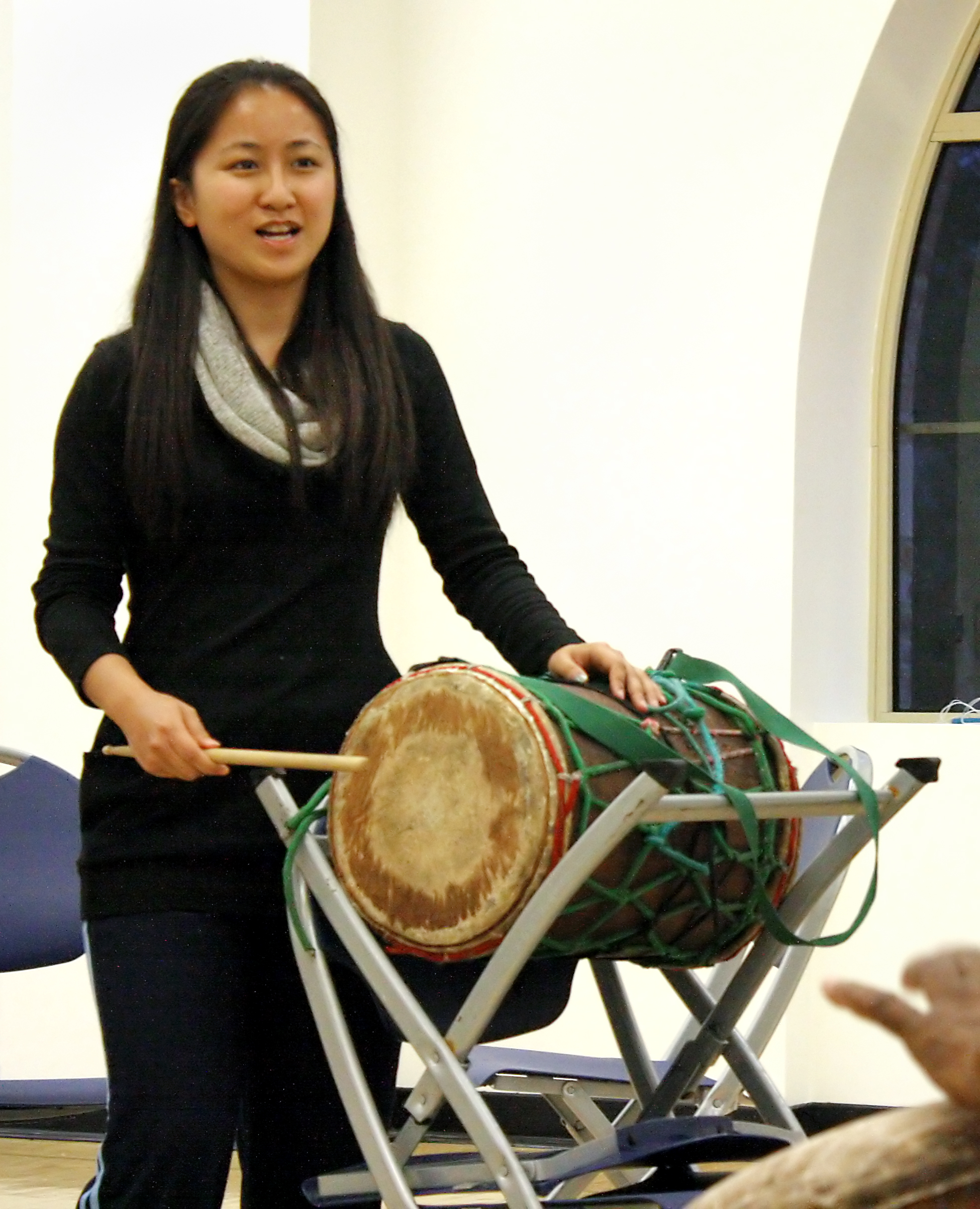After Dark: feel the beat

Anna Li Sze Yin, an international student specializing in finance, left, and the rest of the West African drum class meet at the John Wooden Center every Wednesday evening to practice with J. Fredrick Jones, a veteran dancer and drummer.
By Heather Nivin
Oct. 14, 2010 11:47 p.m.
“Guta-guta-guta-guta-gu-ta-clap.” It’s the beat that means something is about to start.
That something is the West African drum class ““ taught every Wednesday at 5:35 p.m. in the John Wooden Center ““ available to all UCLA students, faculty and staff. The drum class, along with a West African dance class that immediately follows it, is taught by veteran dancer and drummer J. Fredrick Jones ““ casually known as Fred.
Jones has been teaching dancing and drumming at UCLA for eight years now ““ introducing styles that are native to the Mandingue people of Guinea, West Africa.
“What I do here is part of my remembrance of my ancestry. I’m African American. Drumming is in my heritage, so I’ve always been inquisitive about it,” Jones said.
Trained under the direction of well-known African drum and dance instructors such as Doris Owanda Johnson, Mamady Keita and Moustapha Bangoura, Jones fuses traditional West African beats and dance with an experience that is both musically and aerobically challenging.
“It’s a different kind of education,” said Jammie Hopkins, a fourth-year graduate student in the UCLA School of Public Health.
Hopkins, a returning student to the drum and dance class, has been consistently attending for three years now, after participating in African dance throughout his undergraduate years at UC Davis.
“For me, dancing is paying homage to my ancestors. The drums and the music just speak to me. And I have a lot of fun,” Hopkins said.
Each Wednesday, students in the drum class learn a different beat of the Mandingue tribe ““ all of which have different meanings within the culture. The “soko” or “soli” beat that students learn in the first class is meant for an initiation celebration or an adolescent’s passage into adulthood. The “soso” beat symbolizes prayer.
“They have music for competitions between age groups, for marriage, for baby naming, for burial, for love, for war,” Jones said.
During the first class, the students begin by gathering in a circle with drums that are provided. Jones calls out instructions.
“Tap, tap, tap your foot. Now we’re going to clap at the same time. Now keep tapping. Tonight we’re going to learn a rhythm called soko.”
Throughout the hour-long class, Jones shouts out instructions above the beating of the drums with a constant smile on his face that reflects his passion for music and teaching.
For students, the classes offer not just a rich cultural experience, but also a good workout that is perhaps a bit more dynamic than the average 40 minutes on the treadmill.
“Bottom line is, we have more in common than we have not in common,” Jones said. “I think that’s the main draw for students to these classes. To see something from another culture that will help them to see that we’re all really the same. And to sweat.”
Anna Li Sze Yin, a fourth-year international student specializing in finance, is taking the drum class simply because she is interested in African culture, although she admitted that in the first class, it was difficult to pick up the drum beats at such a fast pace, moving from one rhythm to another without skipping a beat.
Although challenging, the classes are geared toward a wide spectrum of learners, from those just starting out to those who are more advanced.
“It’s learning, it’s a challenge to everyone, and it’s fun at the same time,” Jones said.
At the end of the quarter, the drum and dance classes get together and perform a fusion of what they’ve learned throughout the quarter, being put to the ultimate test as they perform beside each other.
“People of all cultures have connections to each other. We’re all one,” Jones said. “And I’m a student. We’re all students in this thing. Lifetime students.”


